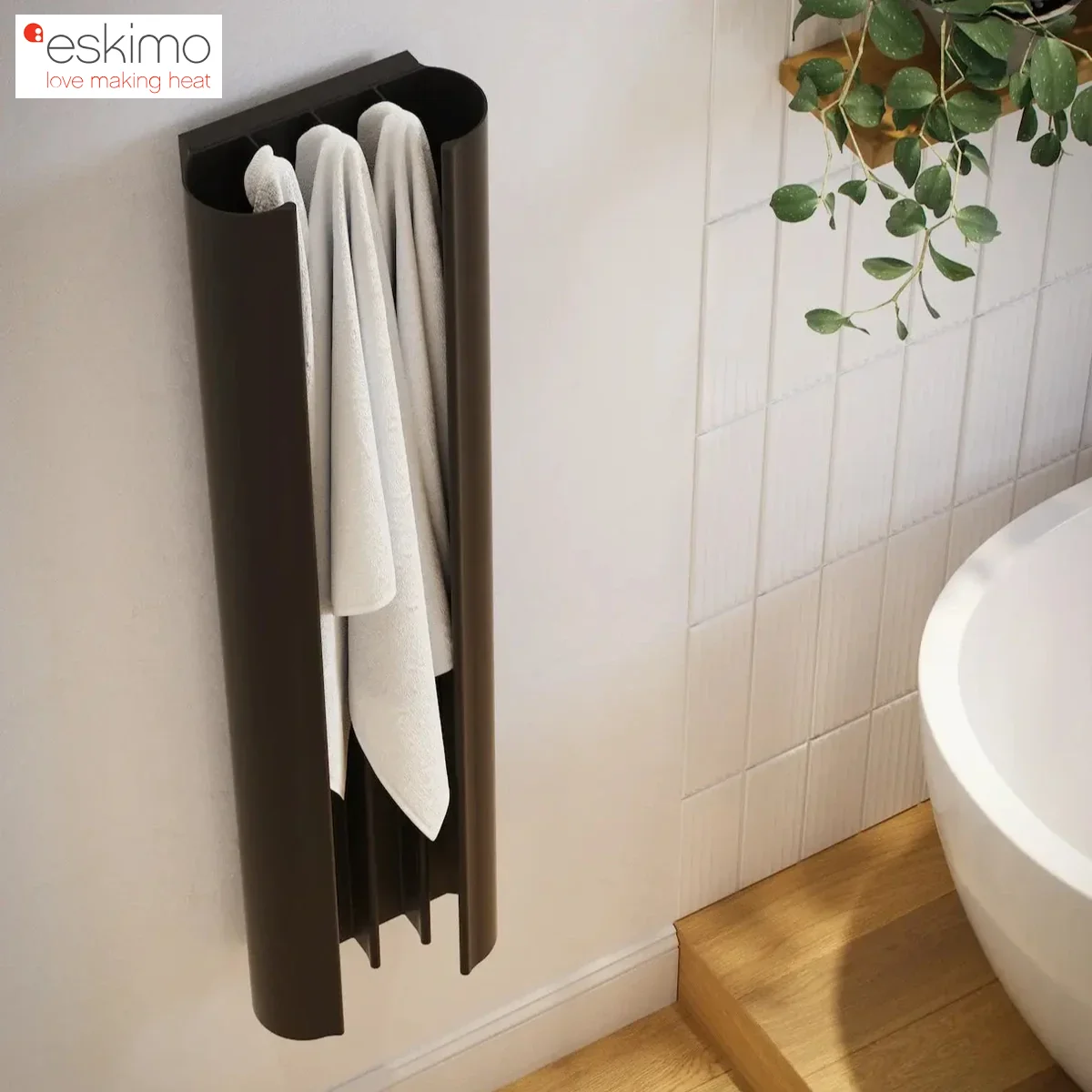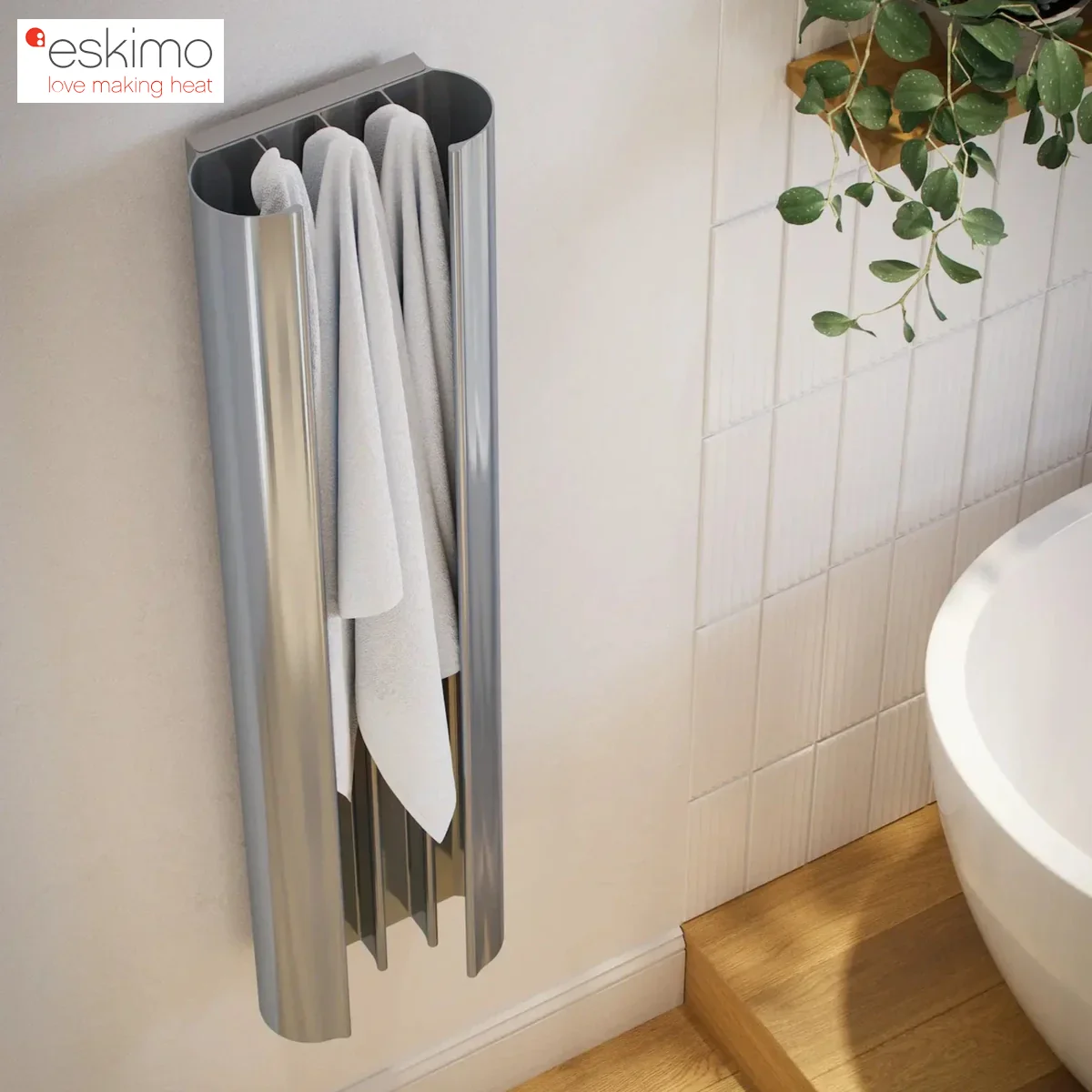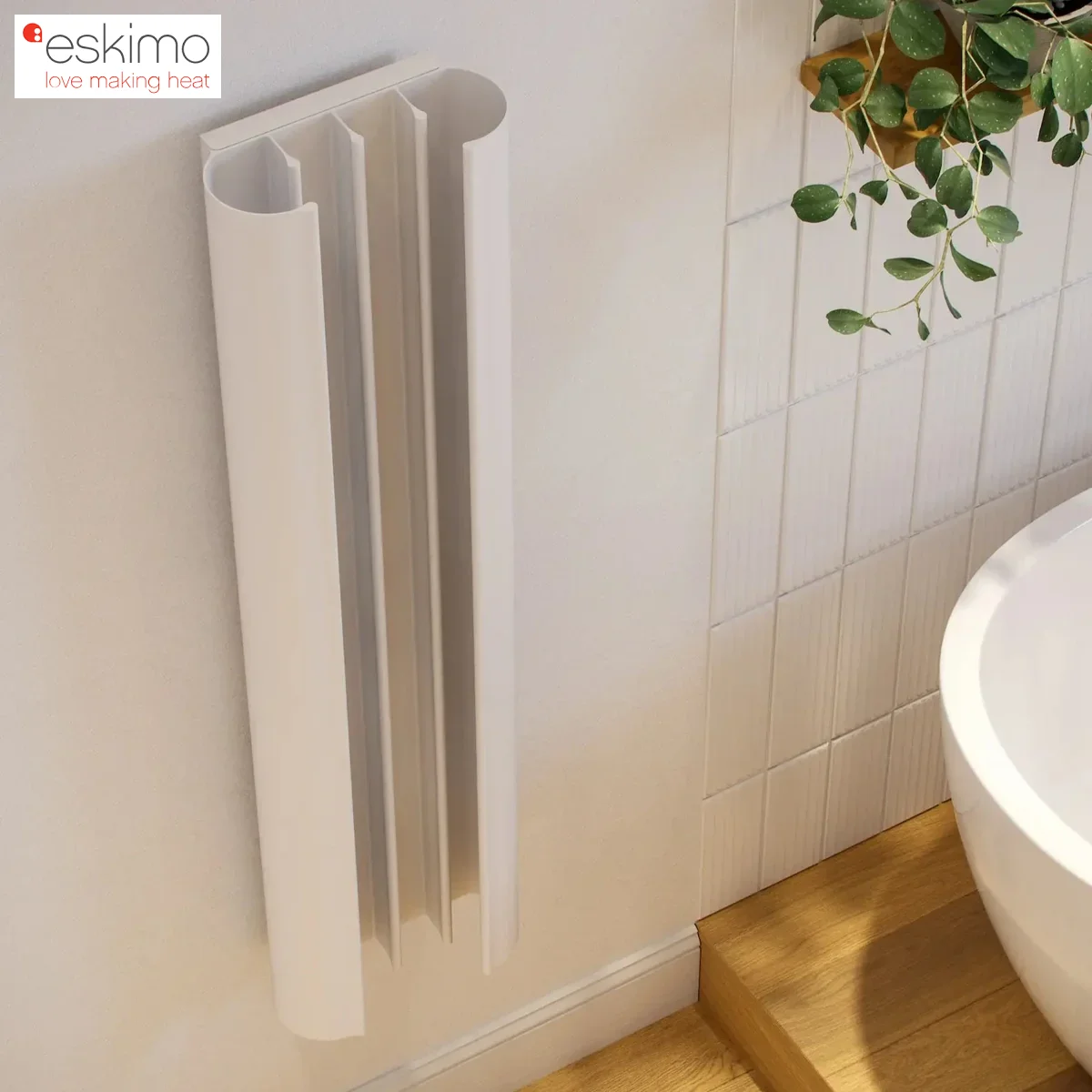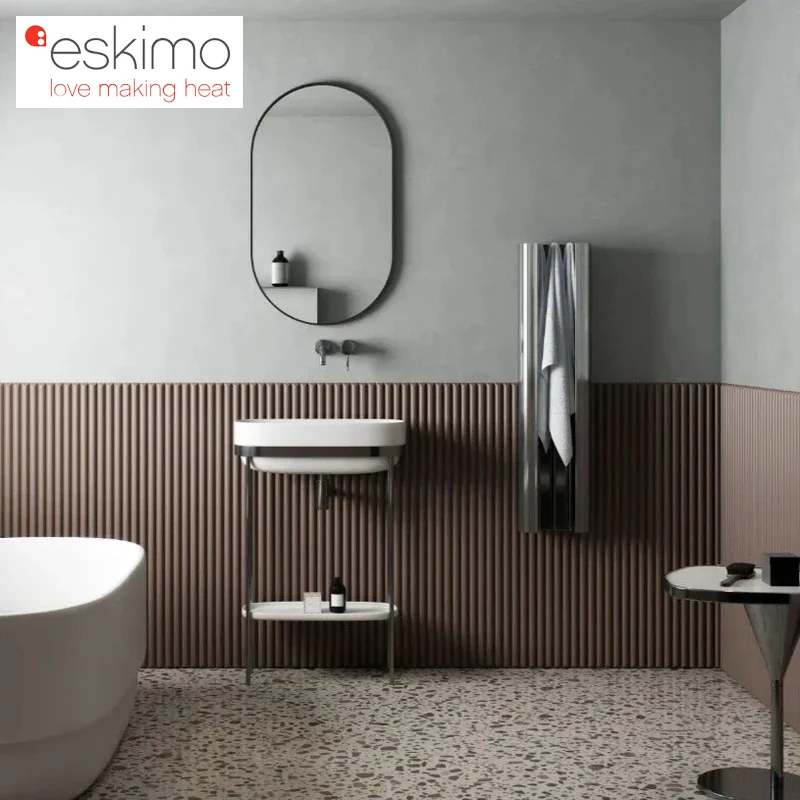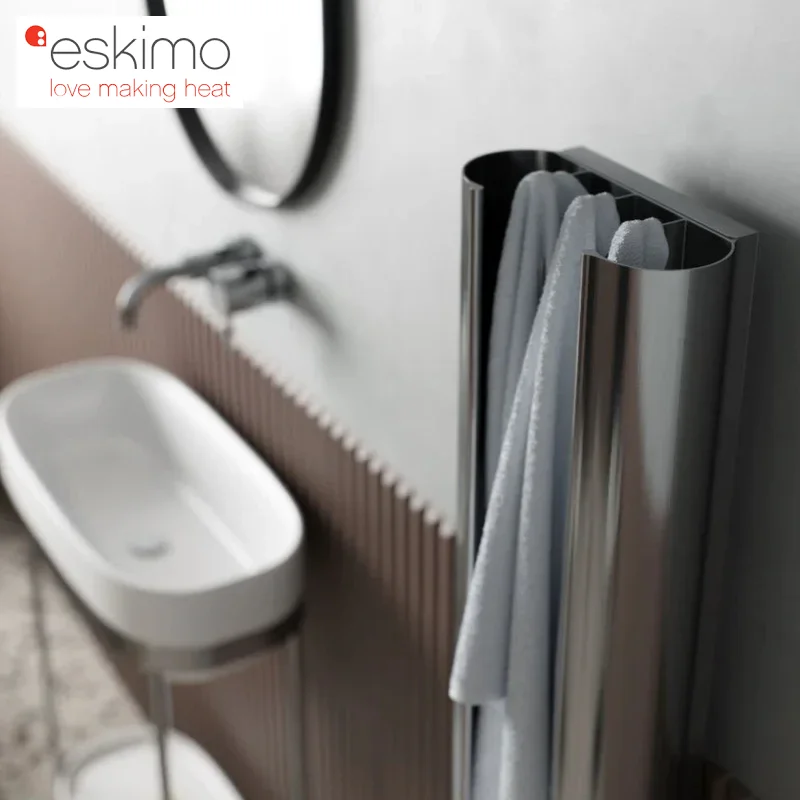Description
Power Supply – 240v AC (compatible with auto timing switch)
Materials – 100% recyclable aluminium with non-slip textured finish
Specifications – 1000mm (H) x 230mm (W) x 132mm (D)
Energy – 200w output (average $0.04 cents per hour)
Installation – Wall-mounted bracket
Compliance – RCM, Electrical safety AS/NZS 60334.2.43:2005
IP Rating – IP 44 bathroom electrical zone 2 and above
Warranty – 3 years
FAQ
1. What’s the difference between Loop & Gordon?
Loop is designed as a natural evolution of Gordon. The additional fins trap warmth and dry towels even quicker than Gordon’s already rapid drying times. Internally, both towel rails are the same.
2. Is Loop safe to leave on all the time?
Yes, Loop can be left on all year round. If you want to have more control over your on and off times, we recommend using a timer switch.
3. What is Loop’s operating temperature?
Loop’s operating temperature is a safe and toasty 43 degrees Celsius.
4. Will Loop heat my bathroom?
Depending on your bathroom size Loop can contribute some radiant warmth to your space, however we don’t recommend using Loop as standalone heating for your bathroom.
5. Can you hang towels on the side enclosures?
Yes! For bigger towels you can hang on the side.

